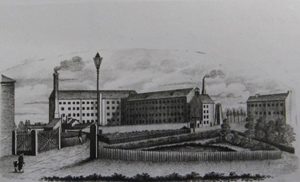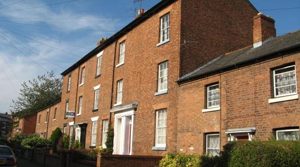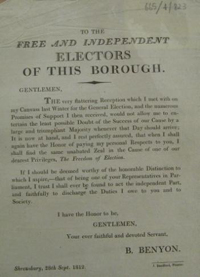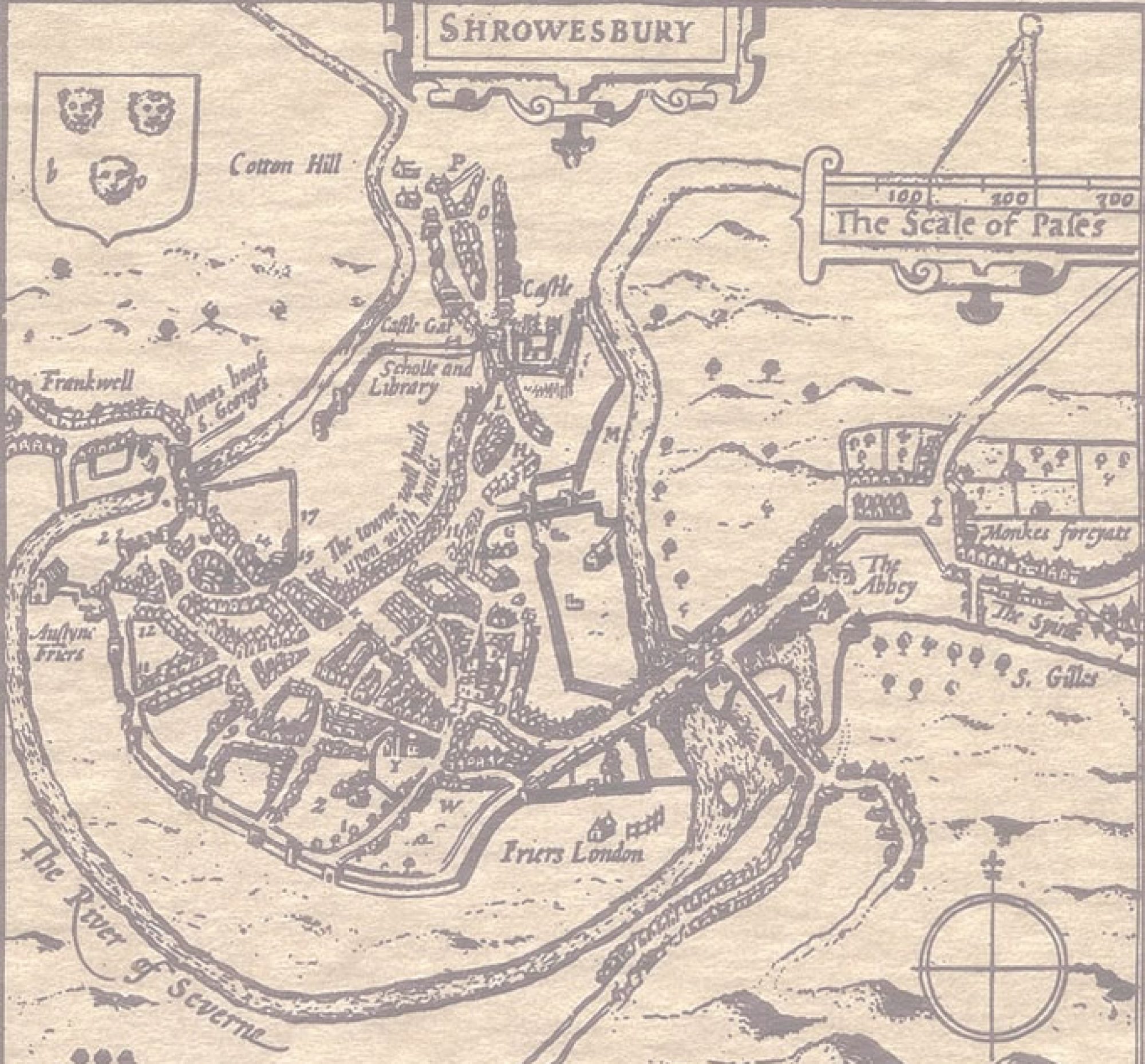
Benyon Street, Shrewsbury is in Castlefields, running from North Street towards the River Severn. It was named in memory of the brothers Thomas (1764 – 1833) and Benjamin (1767 – 1834) Benyon. The brothers were born into a well-to-do home near Whitchurch, where they were baptised into the Presbyterian Church, which by then had embraced Unitarian doctrines. [footnote 1] As young men they were engaged as wholesalers in the woollen trade, buying cloth manufactured in Wales, storing it in warehouses in Mardol, and then selling it on to retailers. [footnote 2] The business prospered, as evidenced by them becoming partners in a bank in Shrewsbury in 1786 and living in fashionable Quarry Place.
John Marshall (1765 – 1845) (who is commemorated by Marshall’s Court, off St Michael’s St) owned a flax spinning mill in Leeds. In 1793 he needed new investors for his struggling concern, and turned to the Benyon brothers, with whom he entered into partnership. How they knew each other is not known – it could well have been through their shared Unitarian faith. The Benyons brought £9,000 (over half a million pounds in today’s money) into the partnership, and with this and Marshall’s own money, they built a new mill in Leeds in 1795 (though it burned down the following year). The Benyons also persuaded Marshall, against his will, to build another mill in Shrewsbury, which is the Ditherington Flax Mill, opened in 1797. [footnote 3]

Relationships between Marshall and the Benyons deteriorated further once the mill was in operation, and by 1804 Marshall decided to buy out the brothers, who by then had invested a total of £17,000 in the business. Such was the success of the operation, however, that buying out the Benyons cost Marshall a whopping £70,000 (nearly £4 million today). With this the Benyons were able to build their own mill on what was then open land in Castlefields, in the area bounded by what is now Benyon Street (the front of the mill), North Street, and Severn Street. [footnote 4] By 1816 the mill employed over 400 people, but thereafter its fortunes rapidly declined, probably mainly due to the severe economic difficulties in the country, and also competition from more efficient northern mills. [footnote 5]

The situation was probably not helped by Benjamin being increasingly involved in other interests, particularly politics (though he did risk his life to join the men fighting a fire that destroyed part of the Ditherington Flax Mill in 1811). [footnote 6] He stood as an Independent Radical candidate for Shrewsbury at the general election in 1812, and also at a by-election in 1814, but on both occasions he came last in the poll. In those days lists of who had voted for each candidate were printed, with their occupations, and it is noticeable that Benyon was only supported by working class voters. [footnote 7] Before the increase in the franchise under the Reform Bill of 1832 there were just too few of these to elect men such as Benyon. Perhaps realising that he had no hope of representing his home town, he then stood as a Whig for the Stafford constituency, being elected in 1818 and again 1820, before retiring due to ill health in 1826. [footnote 8]
The operation of the Castlefields mill was also adversely affected by serious dissensions within the Benyon family, and the brothers, who died in quick succession, decreed that the mill should be sold as a going concern after their deaths. This was attempted on three occasions, but without success, so in the end the site was sold to the builder John Carline for the paltry sum of £1,600. [footnote 9] Carline demolished most of the mill, but he left the flax warehouse, which was used by some of the former employees for weaving linen by hand. The rest of the area was developed for housing in the 1850’s and 60’s, with the old flax warehouse being incorporated into Severn Street as Nos 5-8a. In due course these were adapted as dwellings, but internally they still retain the original ironwork of the flax warehouse. [footnote 10]
Footnotes
[1] The Register of Dodington Presbyterian Chapel, Whitchurch, 1708-1812, http://www.melocki.org.uk/salop/WhitchurchDodingtonPresbyterian.html (13.4.2012)
[2] MacLeod, M., B. Trinder, M. Worthington (1988). Ditherington Flax Mill, Shrewsbury. The Ironbridge Institute.
[3] Green, H. (1981). The Linen Industry of Shropshire. Industrial Archaeology Review 5(2): 114-125.
[4] MacLeod et al, op cit
[5] Green, op cit
[6] Salopian Journal, 30.10.1811
[7] SA 665/3/21, 23
[8] http://en.wikipedia.org/wiki/Stafford_(UK_Parliament_constituency) (27.4.2012)
[9] MacLeod et al, op cit; Hulbert, C. (1837). The History and Description of the County of Salop. Shrewsbury, Charles Hulbert, p.312
[10] Trinder, B. (2006). Beyond the Bridges – the Suburbs of Shrewsbury 1760-1960. Phillimore, p.157.
